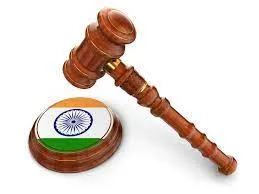
The Challenge of judicial vacancies: Impact on the Judiciary and Society

WHAT IS THE SUPREME COURT RULING ABOUT?
According to the Supreme Court decision, in the lack of a rule requiring so, there is no need to fill openings from waiting lists. The Court noted that the mere publishing of the Additional List does not confer any right to be appointed and that it is up to the good judgment of the State to choose candidates from the Additional List to fill all open positions.
The decision is supported by precedents and emphasizes the significance of establishing precise guidelines and directives for judicial appointments in order to promote fairness and transparency in the selection process.
WHAT DOES THIS MEAN FOR THE STATE?
According to the Supreme Court’s decision, the state’s wisdom will be used to decide whether to fill every position on the Additional List in the absence of a mandate. Only a mandatory rule can create the obligation to fill openings from the Additional List (waiting list).
There is no requirement under the rule that an appointment right arises simply from the publishing of the Additional List. The State isn’t allowed to make arbitrary decisions, but it can choose whether or not to fill open positions from the waiting list.
WHAT IS THE IMPACT OF THE RULING?
The Supreme Court’s decision has the effect of giving the state the freedom to choose whether or not to fill open positions from the waiting list. There is no obligation on the part of the state to make appointments in the absence of an obligatory law, and no appointment right arises from the mere publishing of the Additional List.

The decision emphasizes how crucial it is to have precise guidelines and requirements for judicial appointments in order to guarantee accountability and fairness in the procedure. The solution to the issue of judge appointment delays, however, lies in the professionalization of the judicial administration.
WHAT IS THE CURRENT STATE OF VACANCIES IN THE JUDICIARY?
In several nations, including the United States and India, there are now too many vacancies in the judiciary. The Supreme Court, Courts of Appeals, District Courts, and Court of International Trade all have open positions at the moment. According to the American Bar Association, there are 71 open positions in the judiciary as of right now.
A new system of appointments is required to solve India’s ongoing problem with vacancies and appointments in the higher judiciary. The government’s ability to replace vacancies is constrained, and unless a new appointment system is established to address the problem, the issue of vacancies and pendency will persist.
WHAT ARE THE STEPS BEING TAKEN TO ADDRESS THE ISSUE OF VACANCIES?
According to the American Bar Association, there are presently 73 judicial openings in the United States, and 31 nominees are vying for these positions. The administration is making an effort to nominate eligible candidates as soon as feasible in order to fill these vacancies.
As the government in India only has limited authority to fill vacancies, the problem of vacancies and pendency would persist unless a new system of appointments is established to address the issue. The Centre has occasionally communicated the necessity of filling vacancies to the chief justices of the Supreme Court and the high courts, both verbally and in writing.
WHAT IS THE SIGNIFICANCE OF THE RULING IN THE BROADER CONTEXT OF JUDICIAL APPOINTMENTS?
The Supreme Court’s decision is significant in the larger scheme of judicial nominations because it emphasizes the relevance of establishing precise guidelines and standards for judicial appointments in order to guarantee openness and equity in the procedure. The decision underscores that there is no obligation for the state to appoint anyone in the absence of an obligatory law and that the mere publication of the Additional List does not confer any appointment rights.
The decision also emphasises the necessity of judicial administration professionalisation in order to handle the issue of vacancies and pending cases in the judiciary. Political sensitivities surround the broader context of judicial appointments, and the norms of judicial appointments may be modified to facilitate continued communication between the judiciary and the public.







